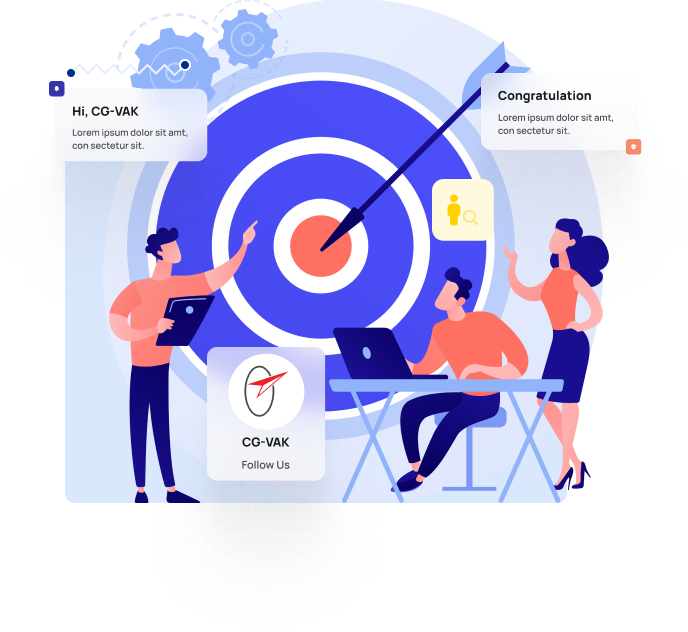AI-Driven Predictive Analytics to Boost Customer Retention for a Mid-Sized Hotel Chain
About
the Client

Objective
- Increasing customer retention rates by 15% within a year.
- Enhancing customer satisfaction and loyalty.
- Reducing marketing costs by focusing on at-risk customers.
Approach
Data Collection
Gathering historical booking data, including customer demographics, booking patterns, stay preferences, and feedback.
Collecting customer interaction data from email campaigns, customer service interactions, and social media.
Incorporating external data such as market trends, competitor pricing, and seasonal factors.
Data Preparation
Data cleaning and preprocessing to ensure accuracy and consistency.
Feature engineering to create relevant features such as booking frequency, average stay duration, and feedback sentiment scores.
Implementation
Integrating the predictive model into the CRM system to monitor and score customers in real-time.
Developing dashboards and reports for the marketing and customer service teams to visualize churn risk scores.
Model Development
Selecting appropriate machine learning algorithms (e.g., Random Forest, Gradient Boosting) to build the predictive model. These algorithms were selected for their ability to handle complex patterns in the data and provide accurate predictions.
Training the model using historical data and validating its performance with a hold-out test set. A hold-out test set was employed to validate the model's performance, ensuring it could generalize well to new data and accurately predict customer churn.
Fine-tuning the model to optimize accuracy and minimize false positives/negatives.
Actionable Insights
Segmenting customers based on their churn risk scores.
Designing personalized retention strategies such as targeted email campaigns, special offers, loyalty programs, and personalized service enhancements.
Results
This approach not only enhanced operational efficiency but also helped in customer relationship management, ultimately driving sustainable growth and customer satisfaction. After implementing the predictive analytics solution, our client was super happy with observed significant improvements
Increased Retention Rates
The customer retention rate increased by 18% within the first year, surpassing the initial target of 15%.
Enhanced Customer Satisfaction
Personalized engagement strategies led to higher customer satisfaction scores, with more positive reviews and feedback.
Cost Savings
Marketing costs were reduced by 25% as efforts were focused on at-risk customers, leading to more efficient resource allocation.
Revenue Growth
Repeat bookings increased, contributing to a 12% growth in overall revenue
Technical Architecture for Predictive Analytics in Hospitality Industry
Data Sources
Internal Data: Booking history, customer demographics, stay preferences, feedback.
Customer Interaction Data: Email campaigns, customer service interactions, social media.
External Data: Market trends, competitor pricing, seasonal factors.
Data Ingestion
ETL Pipeline: Extract, Transform, Load (ETL) processes to gather data from multiple sources and load it into a centralized data warehouse.
Tools: AWS Glue
Data Storage
Data Warehouse: Central repository for structured and semi-structured data.
Tools: Amazon Redshift
Data Processing and Preparation
Data Cleaning: Ensuring data accuracy and consistency.
Feature Engineering: Creating relevant features for the predictive model.
Tools: AWS Glue, Amazon EMR (with Apache Spark), Python libraries (Pandas, NumPy).
Model Development
Machine Learning Algorithms: Selecting appropriate algorithms (e.g., Random Forest, Gradient Boosting)
.
Training and Validation: Using historical data to train and validate the model.
Tools: AWS SageMaker
Model Deployment
Model Serving: Deploying the trained model to make real-time predictions.
Tools: Flask/Django APIs, Docker, Kubernetes, or serverless options (AWS Lambda, Google Cloud Functions, Azure Functions).
Real-time Data Integration
Streaming Data Processing: Real-time data ingestion for timely churn predictions.
Tools: AWS Kinesis
CRM Integration
Real-time Scoring: Integrating the predictive model with the CRM system to score customers in real-time.
Tools: AWS Lambda, AWS API Gateway, Salesforce, HubSpot, Microsoft Dynamics 365.
Visualization and Reporting
Dashboards and Reports: Visualizing churn risk scores and actionable insights for the marketing and customer service teams.
Tools: Amazon QuickSight
Monitoring and Maintenance
Model Performance Monitoring: Continuously monitoring model performance and accuracy.
Retraining and Updating: Regularly updating the model with new data and retraining as necessary.
Tools: Amazon SageMaker, Amazon CloudWatch
Looking for a legacy application modernization company? CGVAK is here to help! As the leading legacy app modernization company. We help transform your legacy systems into modern, efficient, and scalable solutions.